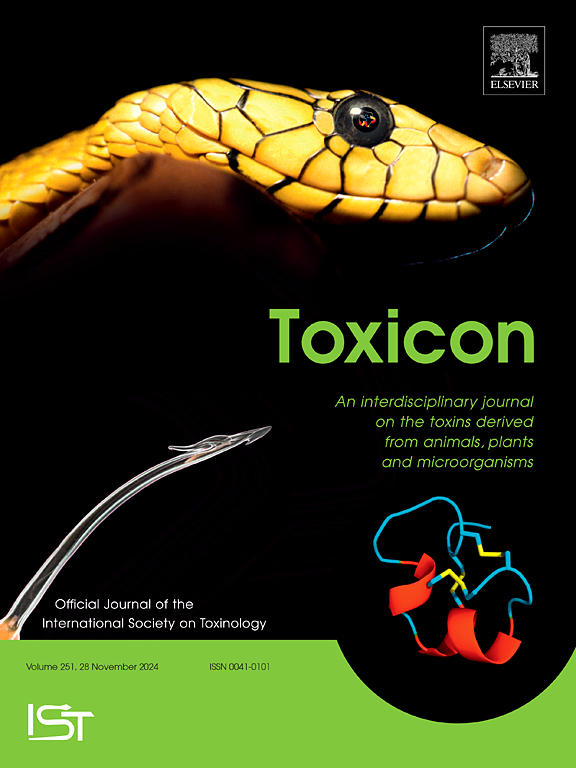马因蛇咬伤而引起的脑出血(出血性中风)。
IF 2.6
4区 医学
Q2 PHARMACOLOGY & PHARMACY
引用次数: 0
摘要
本报告描述了第一例记录在案的脑出血(ICH)在马后博斯罗普斯蛇咬中毒。一只3岁的母马在安乐死前出现急性肾损伤、全身性出血和神经系统症状。尸检结果证实大量脑出血,经免疫组织化学鉴定为局灶内毒液。延迟治疗和抗蛇毒血清不足可能是导致这一结果的原因。本病例强调了马被博思罗普斯蛇咬伤中毒后可能出现脑血管并发症的可能性,这可能表现为微妙的神经学症状。本文章由计算机程序翻译,如有差异,请以英文原文为准。
Intracerebral hemorrhage (hemorrhagic stroke) secondary to Bothrops spp. snakebite envenomation in a horse
This report describes the first documented case of intracerebral hemorrhage (ICH) in a horse following Bothrops snakebite envenomation. A 3-year-old mare developed acute kidney injury, systemic hemorrhage, and neurological signs before euthanasia. Postmortem findings confirmed massive ICH with intralesional venom identified by immunohistochemistry. Delayed treatment and insufficient antivenom likely contributed to the outcome. This case highlights the potential for cerebrovascular complications following Bothrops snakebite envenomation in horses, which may present as subtle neurological signs.
求助全文
通过发布文献求助,成功后即可免费获取论文全文。
去求助
来源期刊

Toxicon
医学-毒理学
CiteScore
4.80
自引率
10.70%
发文量
358
审稿时长
68 days
期刊介绍:
Toxicon has an open access mirror Toxicon: X, sharing the same aims and scope, editorial team, submission system and rigorous peer review. An introductory offer Toxicon: X - full waiver of the Open Access fee.
Toxicon''s "aims and scope" are to publish:
-articles containing the results of original research on problems related to toxins derived from animals, plants and microorganisms
-papers on novel findings related to the chemical, pharmacological, toxicological, and immunological properties of natural toxins
-molecular biological studies of toxins and other genes from poisonous and venomous organisms that advance understanding of the role or function of toxins
-clinical observations on poisoning and envenoming where a new therapeutic principle has been proposed or a decidedly superior clinical result has been obtained.
-material on the use of toxins as tools in studying biological processes and material on subjects related to venom and antivenom problems.
-articles on the translational application of toxins, for example as drugs and insecticides
-epidemiological studies on envenoming or poisoning, so long as they highlight a previously unrecognised medical problem or provide insight into the prevention or medical treatment of envenoming or poisoning. Retrospective surveys of hospital records, especially those lacking species identification, will not be considered for publication. Properly designed prospective community-based surveys are strongly encouraged.
-articles describing well-known activities of venoms, such as antibacterial, anticancer, and analgesic activities of arachnid venoms, without any attempt to define the mechanism of action or purify the active component, will not be considered for publication in Toxicon.
-review articles on problems related to toxinology.
To encourage the exchange of ideas, sections of the journal may be devoted to Short Communications, Letters to the Editor and activities of the affiliated societies.
 求助内容:
求助内容: 应助结果提醒方式:
应助结果提醒方式:


